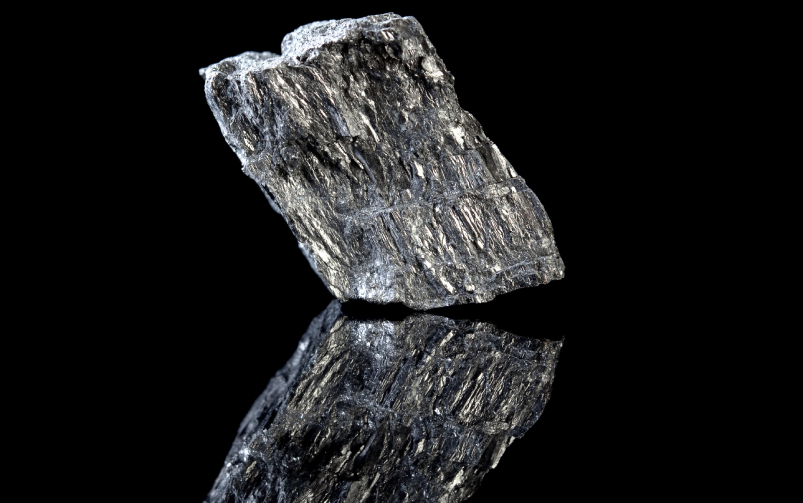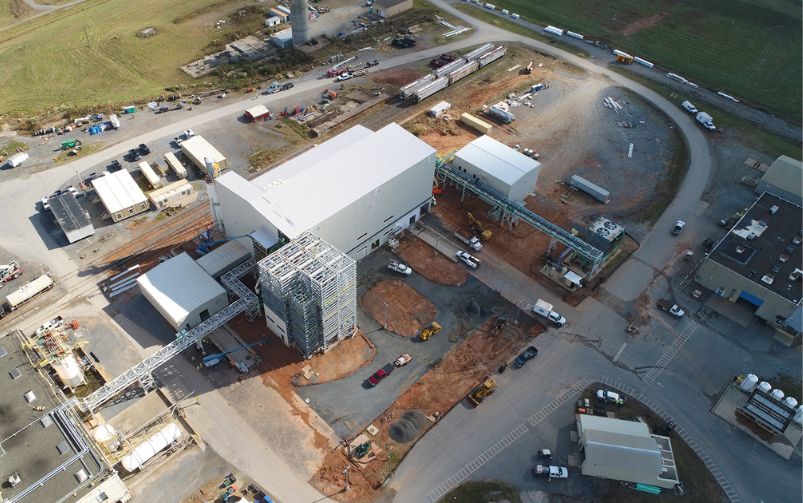All major pieces of equipment have been received at the site of E3 Lithium’s direct lithium extraction field pilot plant in Alberta and operations are set to begin in a matter of weeks. Courtesy of E3 Lithium Ltd.
Welcome back to your weekly mining news recap, where we catch you up on some of the news you may have missed. This week’s headlines include a proposed First Nations-owned utility corridor that would cut the distance and time required to bring natural resources to market, Albemarle investing $109 million into Patriot Battery Metals and highlights from the preliminary economic assessment of Magna Mining’s Crean Hill nickel project.
Rio Tinto CEO Jakob Stausholm told media in Melbourne on Tuesday that the company is looking into the possibility of acquiring lithium assets in Canada, as reported by Bloomberg News. The company has been developing the Rincon lithium project in Argentina and planned to mine lithium in Serbia before the country’s government blocked the development. It is one of the few global diversified miners dabbling in lithium as production of the metal is currently dominated by smaller, specialist producers. Stausholm said that lithium is “a pretty hot market” but that he was “reluctant to come out with too big of a check.”
Equinox Gold announced on Tuesday that its Greenstone gold project near Geraldton, Ontario, is 85 per cent complete and expects to pour gold in the first half of 2024. The project, which is being developed as a 60/40 partnership by Equinox Gold and Orion Mine Finance Group, is on track for a total spend of US$1.23 billion. As of June 30, US$937 million of the budget has been spent (on a 100 per cent basis) with approximately US$170 million remaining for Equinox Gold’s share to fund through to project completion. The operations team has assumed responsibility for the completed permanent effluent water treatment plant, truck shop, warehouse, sewage treatment plant, potable water treatment plant, pit and plant site fuel stations, reagent storage and site mixed emulsion plant.
Silver Lake Resources Limited has halted operations at its Sugar Zone mine located 30 kilometres north of White River, Ontario, to hit “reset” and gain better knowledge of its orebody, fix inefficiencies and come up with a new operating model, as reported by Northern Business Ontario. The company said shuttering the mine for the current 2024 fiscal year will help them improve their mine plan, put gold resources in place and implement a mechanized system of work with enhanced site logistics. The Sugar Zone mine produced 8,155 ounces for the fourth quarter and 38,976 ounces for the year.
Fox Lake Cree Nation and First Nation company NeeStaNan Projects Inc. are partnering to spearhead the development of a utility corridor through the Prairie provinces that would export natural resources like potash, natural gas and bitumen landlocked in western Canada. The Indigenous-owned trade route would cut the distance and time required to bring natural resources to market, and start in Fort McMurray, Alberta, and end in Port Nelson, on the Hudson Bay in northeastern Manitoba, where Fox Lake Cree Nation would construct and own a deep-sea port.
American lithium miner Albemarle Corporation will invest $109 million into Vancouver-based hard-rock lithium exploration company Patriot Battery Metals. Albemarle will subscribe for around 7.1 million common shares of Patriot Battery Metals at a price of $15.29 per common share, representing a 4.9 per cent stake in Patriot Battery Metals. Blair Way, Patriot Battery Metals president and CEO, said the investment will help the company to “more aggressively advance the Corvette property through drilling, permitting, study work and more.”
On Monday, Magna Mining Inc. published a preliminary economic assessment (PEA) for its Crean Hill nickel project in Sudbury, Ontario. The base case scenario presents a 15-year mine life and envisions a combination of open-pit and underground mining, with the resources being sold to a mill in Sudbury.
Companies in the extractive sector are becoming increasingly reliant on technology, and they have to be aware of potential cybersecurity threats that could impact their operations, according to Rob Labbé, from the Mining and Metals Information Security Analysis Centre (MM-ISAC). Labbé noted that mining, quarrying and oil and gas companies are attractive targets for cybercrime and that ransomware is the most prevalent type of cybersecurity issue within the sector.
E3 Lithium Ltd. announced all major pieces of equipment needed to begin commissioning the company’s direct lithium extraction (DLE) pilot plant in Alberta are now on site. The company said the next step is to connect the DLE equipment to the pilot plant’s piping and wiring system and operations should begin in a matter of weeks. The DLE field pilot plant will bring brine liquid to the surface and extract lithium from it before refining it into battery-quality product.
CIM Magazine spoke with Hoist and Haul 2023 conference chair Dick McIvor for the June/July issue about the key drivers in hoisting and the newest technology advances. McIvor spoke about what to expect from the international conference on mine hoisting and haulage, which is organized and hosted by CIM and will be taking place August 13-16 in Montreal, Quebec. The conference includes a keynote on the successful rescue of 33 miners trapped in the San José mine in 2010 in Chile, of which hoisting was the method that saved the day and got the miners out safely.
In the June/July Issue of CIM Magazine, we profiled Shannon Katary, corporate communications advisor for Vale’s base metals division, on the role mentorship has played in her career. Katary said she is grateful to the mentors and role models who shared their knowledge and advice with her as a newcomer to the mining industry in 2006. Now, Katary is following in their footsteps as she herself gives back as a mentor to encourage young people to consider mining as a career path.
Here are some highlights from this week’s quarterly reports:
Taseko Mines Limited produced 28.2 million pounds of copper, a 13 per cent increase over the first quarter, at operating costs of US$2.66 per pound of copper. The company also reported an adjusted earnings before interest, taxes, depreciation and amortization (EBITDA) of $22.2 million and adjusted net loss was $4.4 million.
Kinross Gold Corp. produced 555,036 of gold equivalent ounces, representing a 22 per cent increase year over year, at an all-in-sustaining cost (AISC) of US$1,296 per gold equivalent ounce. The company declared a quarterly dividend of US$0.03 per common share and owed its strong quarterly results to increased production at its Tasiast, Paracatu and La Coipa mines.
Lundin Mining Corporation produced 60,057 tonnes of copper, 36,115 tonnes of zinc, 34,000 ounces of gold and 4,686 tonnes of nickel and the company remains on track to achieve production guidance. Lundin Mining also reported an adjusted EBITDA of US$162.2 million.
Equinox Gold Corp. produced 137,661 ounces of gold at an AISC of US$1,502 per ounce and is on track to achieve production guidance. The company reported an adjusted EBITDA of US$70.9 million. The company said it is its strongest first half of the year on record in terms of production, revenue and adjusted EBITDA.
That’s all for this week. If you’ve got feedback, you can always reach us at editor@cim.org. If you’ve got something to add, why not join the conversation on our Facebook, Twitter, LinkedIn, or Instagram pages?




